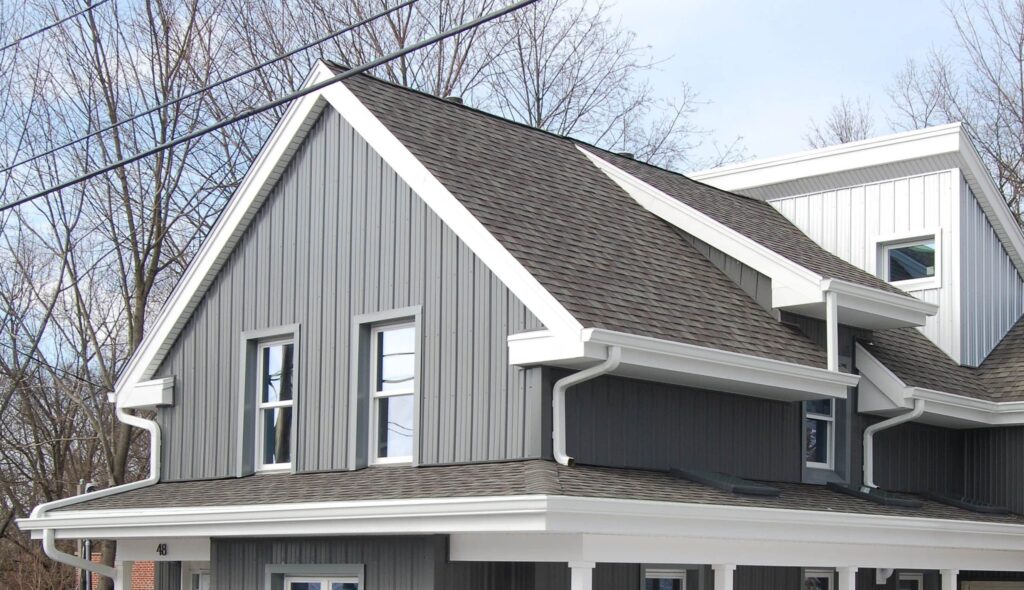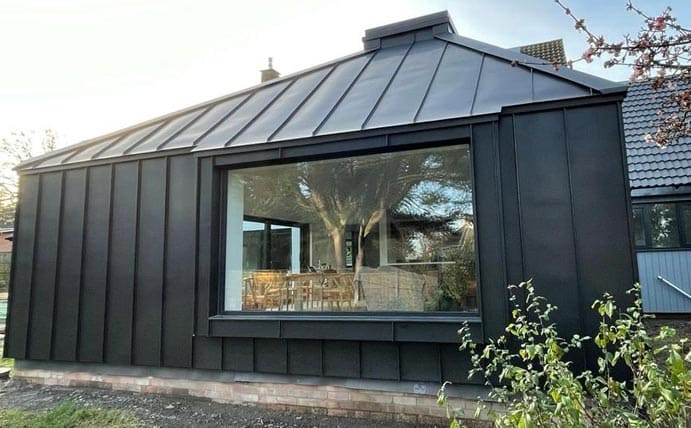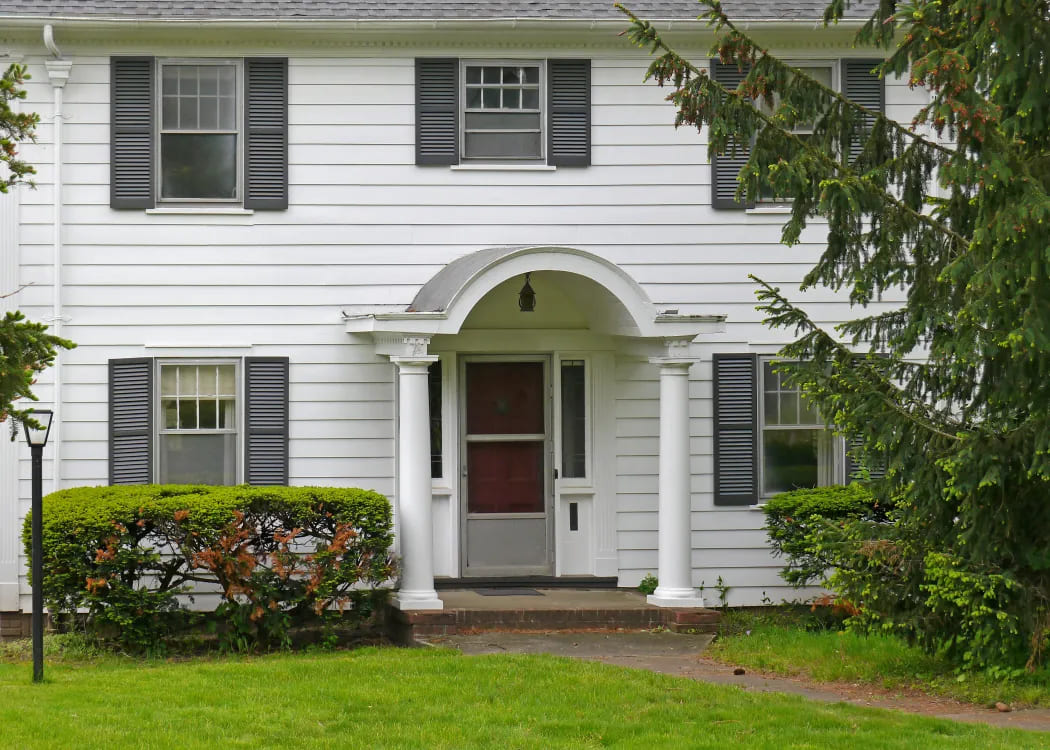Metal Siding Development Prospects
In the field of construction, material innovation is constantly driving the innovation of building exterior wall concepts. Metal siding stands out for its wide range of applications and excellent durability. Whether it is industrial buildings or residential projects, metal siding has become a popular choice among building materials due to its affordability, design flexibility and aesthetic characteristics. This article will take you to an in-depth understanding of metal siding and present you with a comprehensive guide to metal exterior walls, including its advantages, disadvantages, installation and maintenance tips, etc.
1.History and Current Development of Metal Siding
Historically, metal materials have performed well in roofing and durable window frames, but as exterior wall covering materials, they have been far inferior to traditional residential materials such as stucco, bricks, and wood. However, things have changed now. Metal siding is becoming increasingly popular among homeowners, contractors, and businesses.
According to the 2021 41st Annual Contractor Survey of Metal Building News, metal buildings grew by 12.9% in 2021, with metal siding rising by 2.5% and light steel frame exterior walls rising by 9.5%. This growth trend is expected to continue in the future as more people recognize the advantages of metal siding.
In addition, the economy and durability of metal siding make it very attractive for companies looking for efficient building solutions. In addition to residential, commercial, and industrial fields, metal siding is also widely used in fields such as agriculture and transportation. Because of its low maintenance requirements and good durability, it is often used in agricultural buildings.

Metal accounts for 87% of total roof area in the agricultural sector, commercial and agricultural shipments account for 69% of the metal siding market, and the agricultural sector leads the pack in metal siding use at 87%, according to a 2021 Metal Building Association study published in Metal Building News. Many companies are also choosing metal siding for their truck fleets, citing its lightweight design and corrosion resistance.
2.What is metal siding?
Metal siding is made of durable materials such as aluminum, steel, and stainless steel. These metal wall panels not only protect the building structure, but also show clean lines and modern design style. In the past, traditional siding materials (such as wood siding) were the first choice of builders, but with the development of building materials, metal siding has become a popular choice. Its durability, low maintenance requirements and rich color options have brought new vitality to the construction field.
3.Types of Metal Siding
(i) Aluminum Siding
Aluminum exterior walls are popular with homeowners, especially in coastal or humid areas, because they are resistant to moisture, sea salt, and mold. However, it may be noisy when the climate changes, and it will have noise, loss of gloss, and easy to dent and scratch problems over time, but it is not inferior in appearance. It can be installed horizontally or vertically and has a variety of patterns and textures. The service life is about 50 years, and the cost per square foot is $3-18.
(ii) Copper Siding
Copper is a high-end and more expensive siding material. It is expensive but durable and has a high return on investment. It has good plasticity and can enhance the appearance of the house. Its durability is related to thickness, and thick copper siding is more durable. Use it in small areas to control costs and avoid visual pressure. Although it is complicated to install, it has a service life of about 100 years and costs $20-35 per square foot, but it will oxidize and discolor.
(iii) Steel Siding
Steel has expanded from commercial buildings to the field of home outdoor walls. It has good strength and durability, is fireproof and insect-proof, has obvious advantages in dry areas, and can imitate the appearance of logs to blend in with the environment. It costs about $4-16 per square foot and has a service life of 50 years, but the protective coating is easily rusted if damaged, and requires regular maintenance.

(iv) Tin siding
Tin siding is affordable, can withstand hail and storms, and is often used for decoration or roofing. But it has a short service life and is prone to dents and rust. It costs about $1-3 per square foot and is suitable for homeowners who are cost-sensitive and don’t mind its shortcomings.
(v) Zinc siding
Zinc is an environmentally friendly non-ferrous metal with a higher price, similar to copper. It resists corrosion and UV rays, is a “self-repairing” metal, low maintenance and durable. It has a service life of 80-100 years, and the color changes from dark gray to light gray or blue. The cost is about $15-25 per square foot, which is suitable for homeowners who like its color-changing properties and can accept the cost.
4.Metal siding application industry
(i) Residential field
Metal siding is widely used in residential areas and is a common building material. It can provide a beautiful appearance for the house and has excellent weatherproofing ability. A rich selection of colors and styles allows it to match almost any architectural style.
(ii) Commercial building application
Metal siding is also widely used in commercial buildings such as retail stores and offices. It is an affordable option that can give the building a stylish and professional appearance while protecting it from extreme weather.
(iii) Industrial facility use
Metal siding has long been a popular choice for industrial facilities such as factories and warehouses. It is an economical and efficient solution that can effectively resist wind, rain and damage.
(iv) Agricultural building application
Metal siding is becoming more and more popular in agricultural buildings such as barns, sheds and greenhouses, providing excellent weatherproofing protection.

5.Advantages of metal siding
(1) Durability
One of the significant advantages of metal siding is its durability, especially those with a galvanized finish, which can last for decades with little to no wear and tear. They can withstand extreme weather, whether it’s blazing sun, driving rain or raging winds. The non-combustibility of metal also adds fire protection to the building.
(2) Advantages of low maintenance
One of the great benefits of installing metal siding is the low maintenance requirements. Metal is strong and durable and is not prone to rot, warping or termite attack like wood, nor is it prone to mold or rust, especially when treated with advanced paint techniques.
(3) High energy efficiency
Metal siding has inherent energy-saving properties, and its insulating properties help maintain indoor temperatures and reduce energy consumption in heating or cooling systems, thereby saving energy and lowering utility bills.
(4) Good fire resistance
Safety is crucial in construction projects, and metal siding excels in this regard. Its non-flammability effectively prevents potential fire hazards.
(5) Aesthetic diversity
Metal siding comes in a variety of colors, from classic browns and chestnut browns to vibrant leaf greens, desert beiges, terra cotta colonial reds and more, giving homeowners and builders a great deal of design flexibility. Whether you’re looking for a rustic style with corrugated steel siding or a sleek, modern design with a flat metal surface, a variety of colors are available to suit your needs.
6.Disadvantages of Metal Siding
(i) Initial Cost Issues
Metal siding, especially those with premium colors or galvanized materials, may cost more upfront than other siding options. However, given its durability and low maintenance, it is usually a cost-effective solution in the long run.
(ii) Sagging and Noise Issues
Some types of metal siding, especially those with thinner panel profiles, are prone to denting. And in heavy rain or hail, metal siding can make more noise than other materials.
(iii) Susceptible to Scratches and Fading
Over time, especially in severe weather conditions, metal siding may fade, and deep scratches can reduce its visual appeal.
7.Installation and maintenance tips for metal siding
(I) Installation
The installation of metal siding is much more complicated than it looks, and expertise is required to align panels, ensure proper spacing of fastener connections, and address potential performance issues such as oil tanks. Although there are plenty of tutorials, DIY installation can lead to errors that affect the life and function of the siding. Proper installation ensures optimal energy efficiency and good performance in extreme weather, so it is recommended to seek professional help.
(II) Maintenance
Keeping metal siding clean can enhance its appearance and extend its life. If the building is located in a polluted or dusty area, it should be cleaned at least once a year, or more frequently. It is crucial to regularly check for scratches, dents, or signs of corrosion. Early detection and early resolution can avoid more serious and expensive problems.
Although metal is durable, paint may fade or peel over time. Repainting or coating every few years can help maintain appearance and enhance corrosion resistance. When choosing paint or coating, you should choose a high-quality product that preferably has UV protection to keep the color bright and extend the life of the siding.

1 Comment